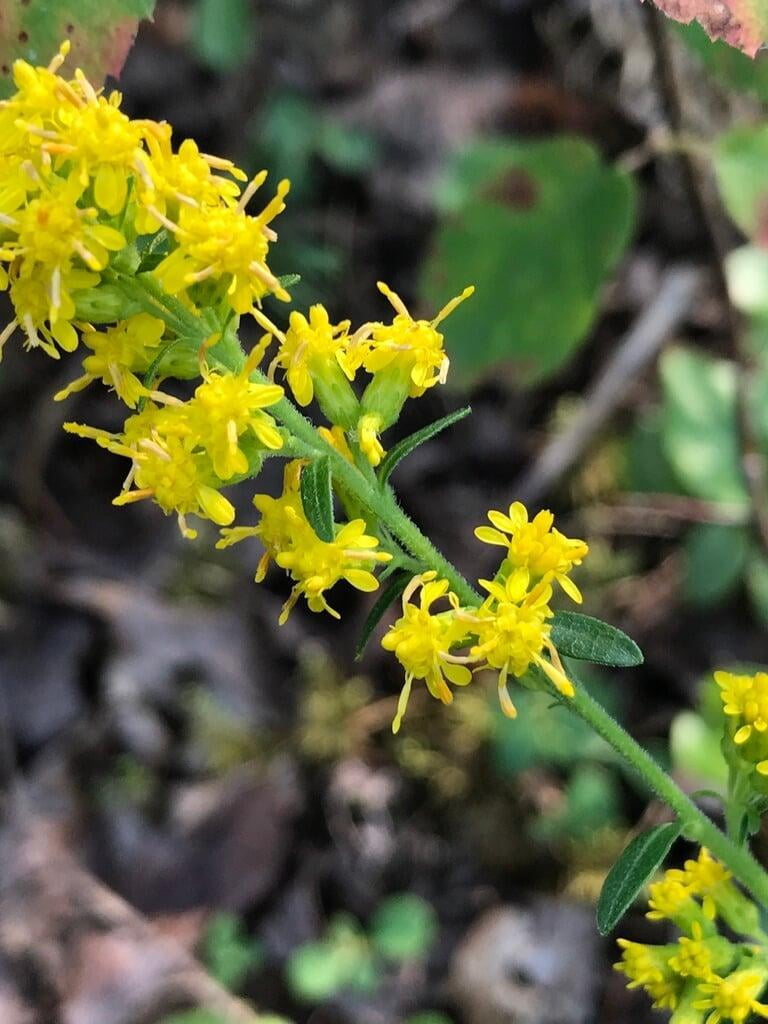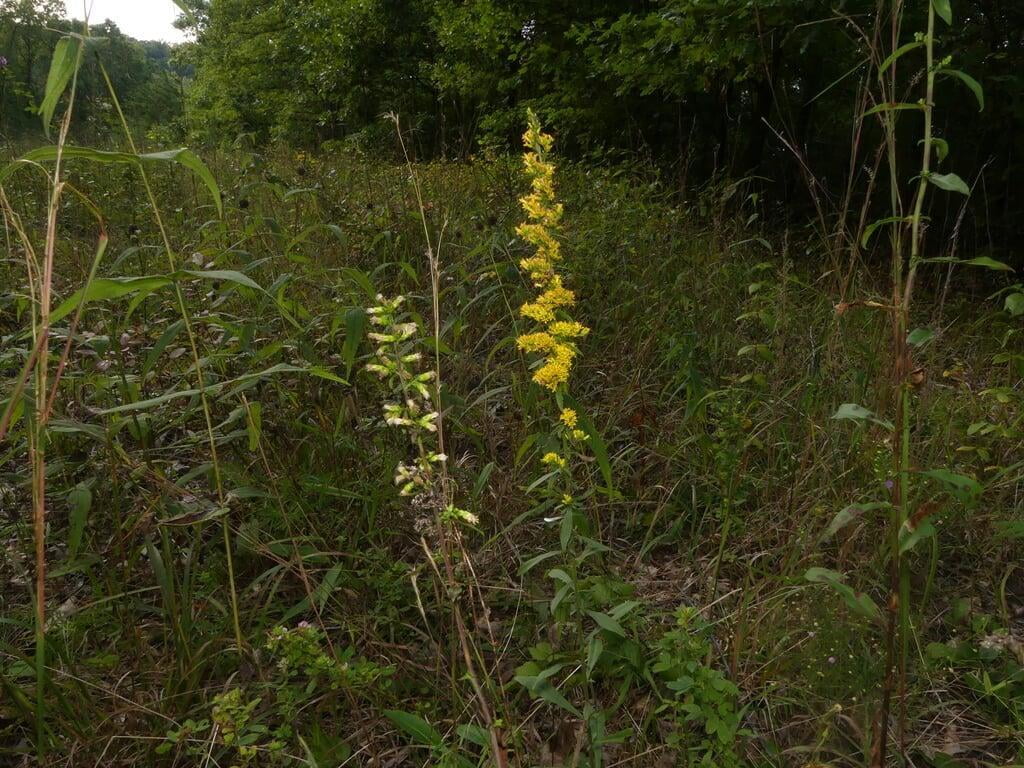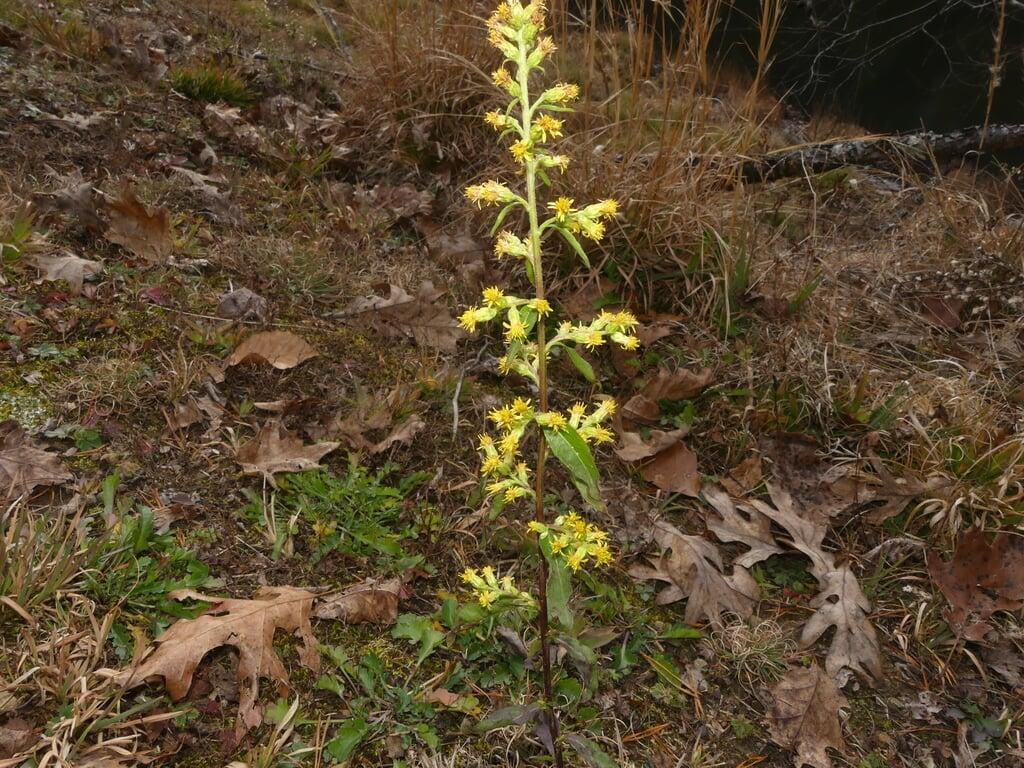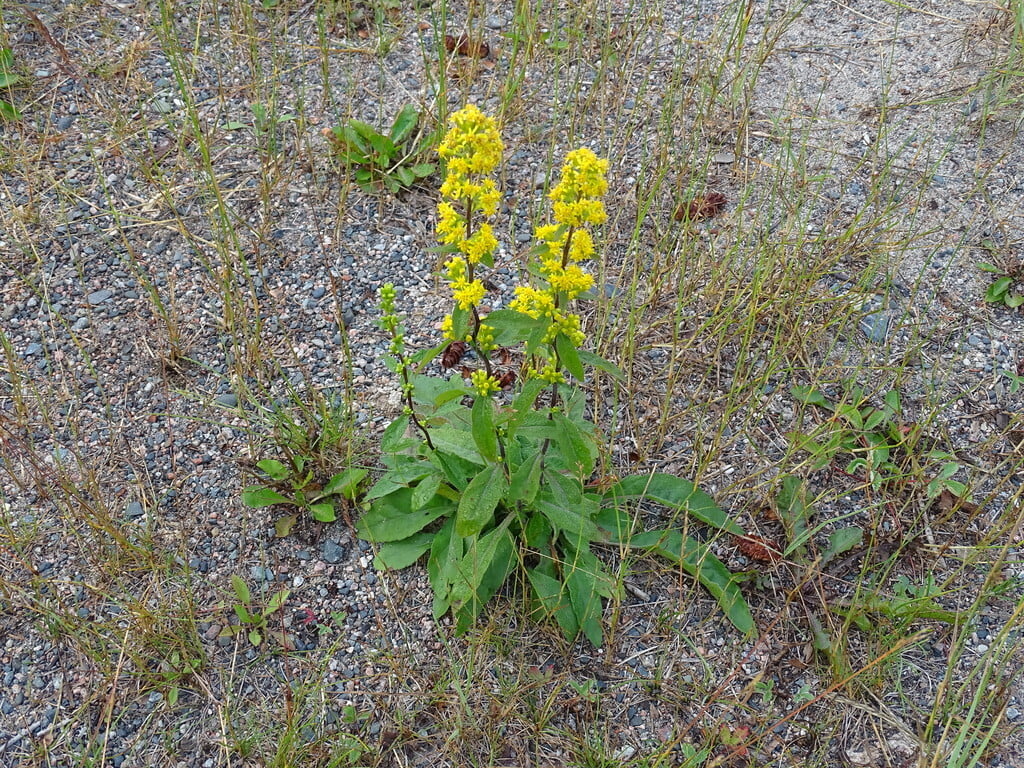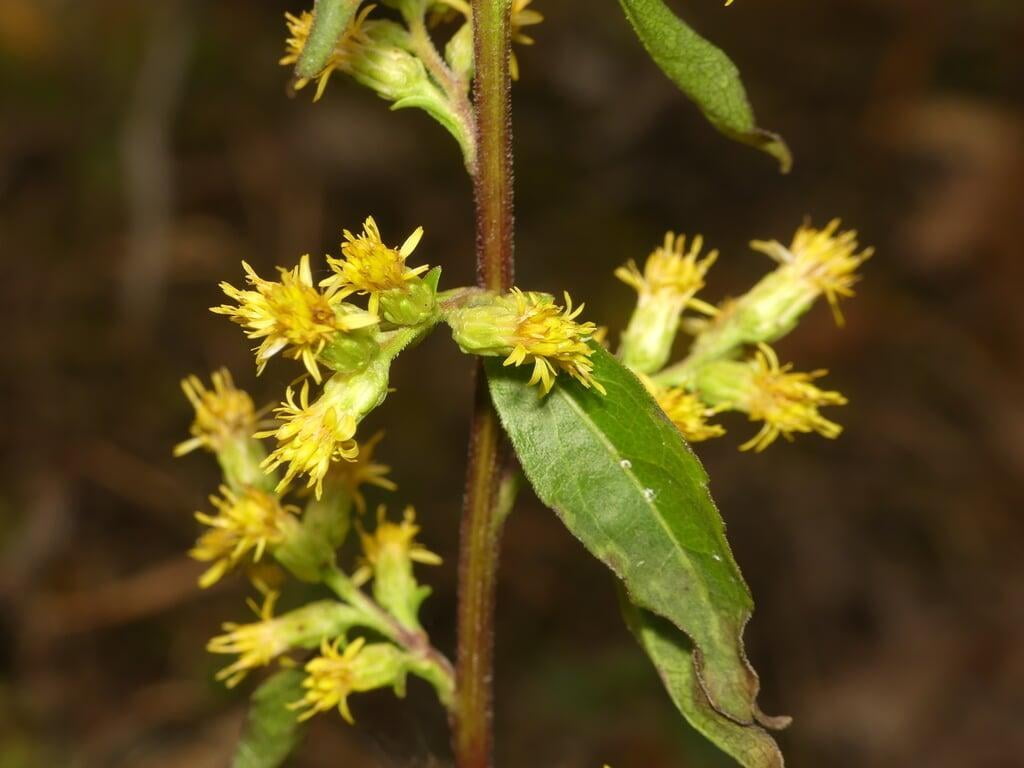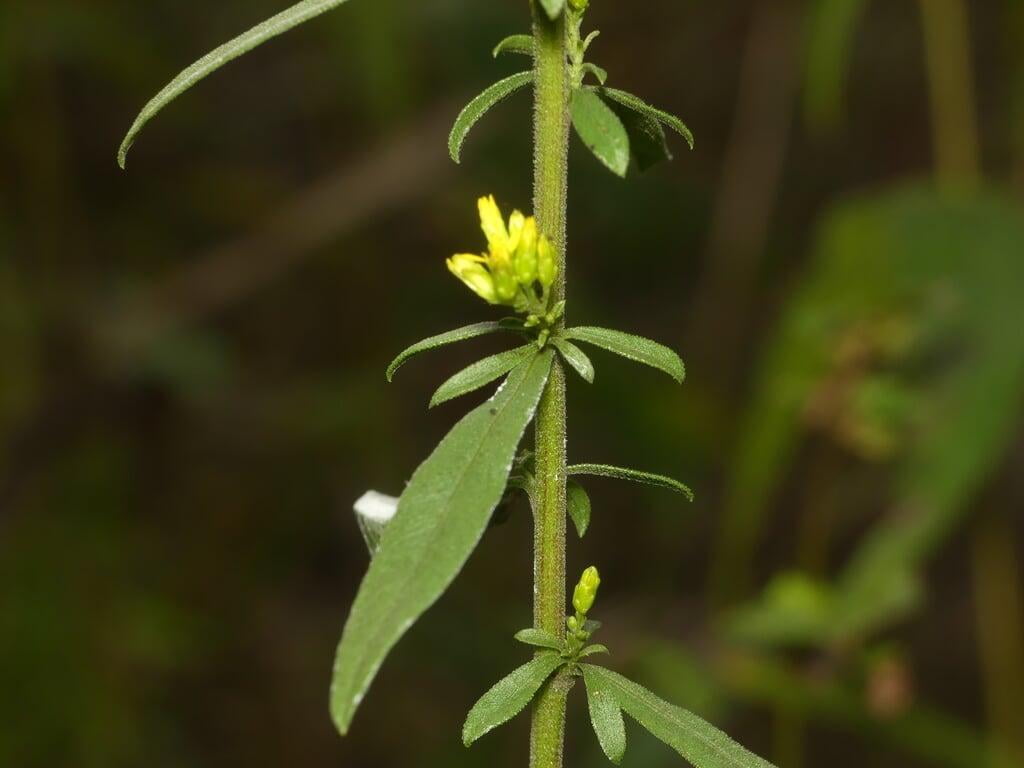Solidago hispida
Hairy goldenrod Description:
Solidago hispida, also known as hairy goldenrod, is a herbaceous perennial plant that belongs to the Asteraceae family. It is native to North America, where it can be found growing in a variety of habitats, including meadows, prairies, and open woods. This plant is named for its hairy stems and leaves, which are covered in fine, soft hairs. The stems can grow up to 3 feet tall, and they support a cluster of small, yellow flowers that bloom in late summer and fall. These flowers are an important source of nectar for a wide range of wildlife, including bees, butterflies, and other pollinators.
Aside from its ecological importance, Solidago hispida is also known for its medicinal properties. Native American tribes have traditionally used various parts of the plant to treat a variety of ailments, including digestive issues, fever, and kidney problems. Modern research has confirmed that the plant contains compounds that may have anti-inflammatory and antibacterial effects. However, it should be noted that some species of goldenrod are often mistakenly blamed for causing hay fever, when in fact it is usually ragweed that is the culprit. Solidago hispida is not typically associated with allergies and is generally considered a safe and beneficial plant to have in a garden or natural area.
Native Range:
Hairy goldenrod has a range that generally extends from Minnesota south to Louisiana and the Eastward, covering most of the Eastern United States.
Standard Plant Information:
Plant Height: 18"- 36" inches
Bloom Time: August - October
Preferred Habitat: Does well in part shade to full sun in sandy or gravelly soil. Often found in open dry woods, rocky outcrops, and dunes.
Sowing:
For most homeowners, the best option is to scatter seed on the ground by hand broadcasting at a minimum of 16-64 pls ounces per acre. For even coverage, we recommend that you broadcast seed in perpendicular rows across the site to ensure even coverage.
You’ll want to broadcast any grass seed first, which will get raked into the soil lightly. Next, it is ideal to mulch the area lightly with either a clean (no seed) straw or preferably with our native Little Bluestem straw, sold at our retail garden centers. After a light mulching is complete, now it’s time to broadcast your native wildflower seeds, which should not be raked into the soil. A good rain or watering is sufficient to cover the seed.
Planting:
Simply dig a hole in the soil slightly larger than the plant’s roots. Ensure that the soil line of the plant is maintained during the transfer (i.e. the plant should be at the same level with the ground as it was in the pot). Pack any loose dirt back around the plant and make sure you water it well the same day to ensure it has the best chance of survival.
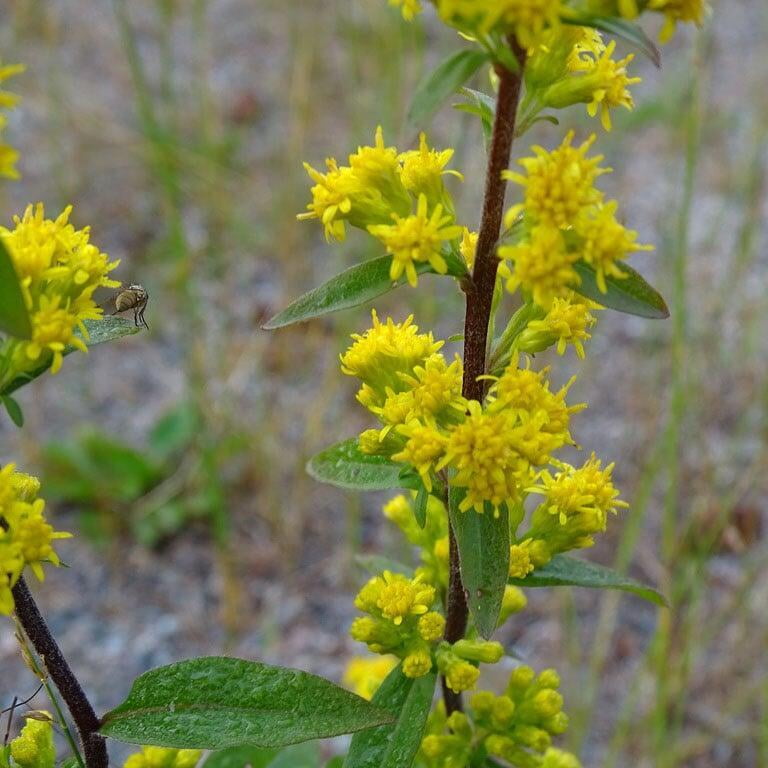
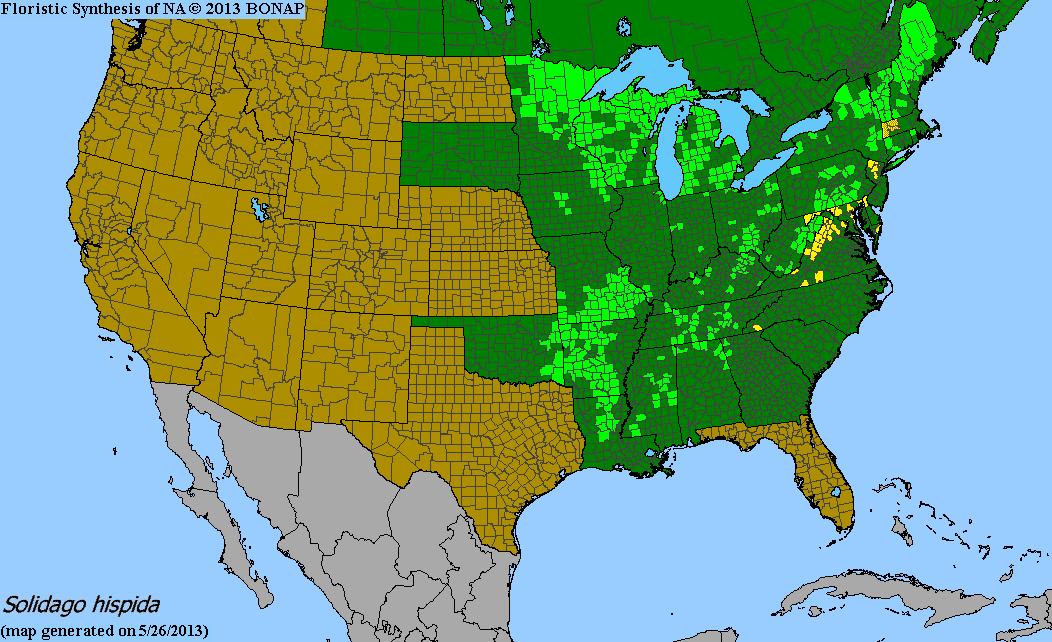
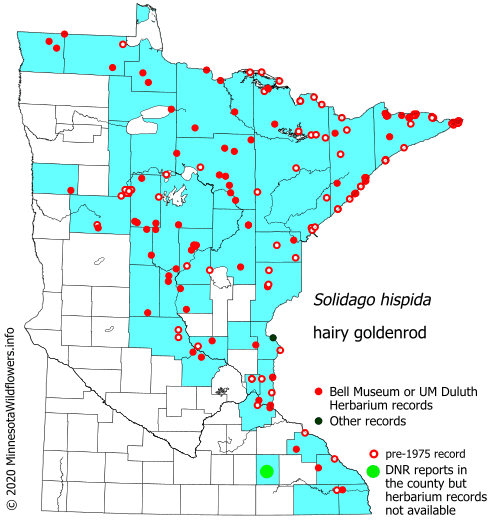
maps used with permission from MN Wildflowers
Solidago hispida Gallery
Solidago hispida Gallery
